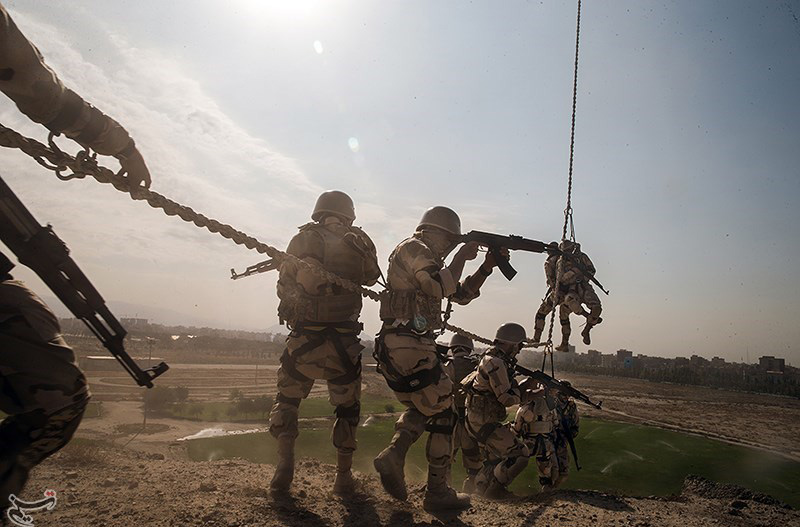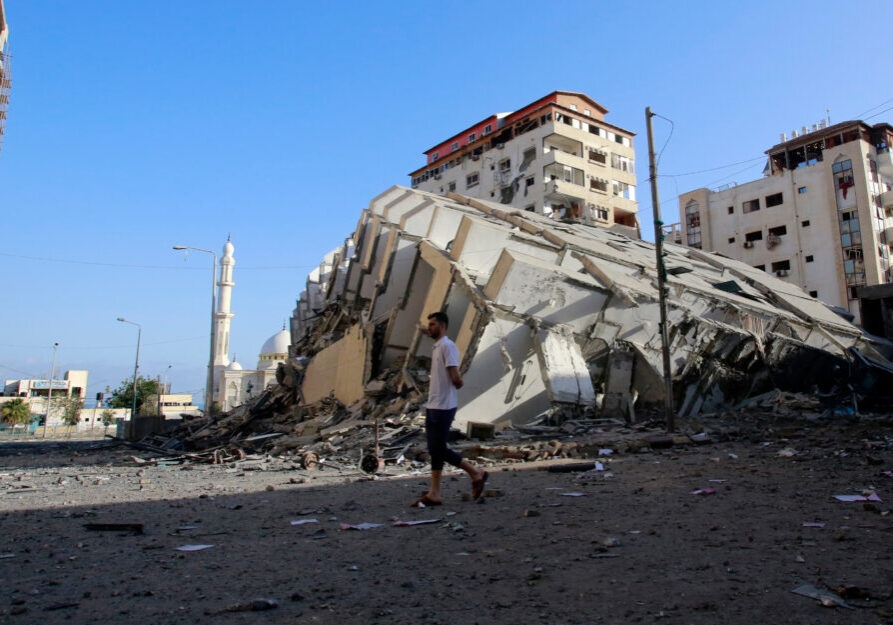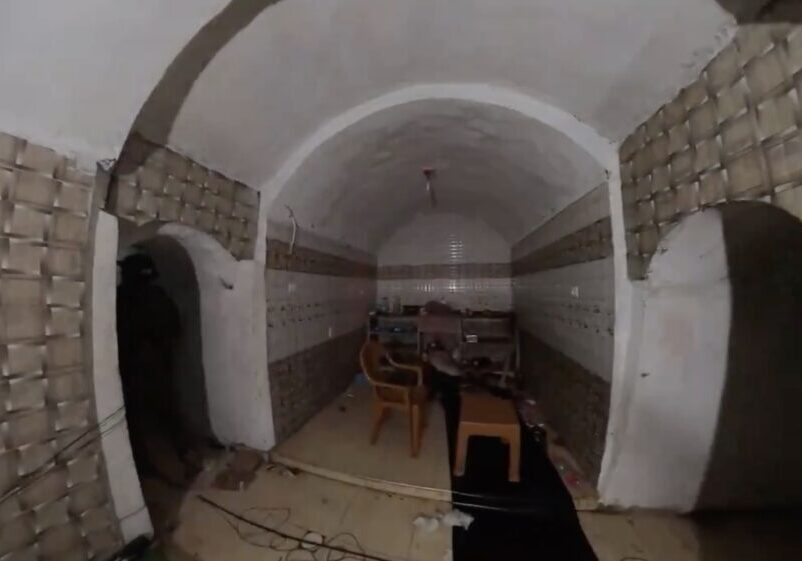Australia/Israel Review
Iran Doubling Down on its Militia Model
Jan 10, 2018 | Farzin Nadimi

On Nov. 21, Maj. Gen. Qasem Soleimani, Commander of Iran’s Islamic Revolutionary Guard Corps-Quds Force (IRGC-QF), sent a letter to Supreme Leader Ali Khamenei in which he declared victory over the Islamic State (IS) “caliphate” in Syria and Iraq.
In his reply, Khamenei called on all “Mojahed” forces (i.e., fighters in the name of God) to maintain readiness for meeting future regional challenges. In that vein, recent statements by IRGC chief Maj. Gen. Mohammad Ali Jafari and other commanders have emphasised the “Basij of the Islamic World” (Basij-e Jahan-e Islam, or BJI) as an emerging model for international Shi’ite mobilisation under Soleimani’s leadership.
Armed forces Chief of Staff Maj. Gen. Mohammad Bagheri believes a combination of this model and Iran’s expanded military capacities can unite allied countries to prevent an IS resurgence, especially in Afghanistan and parts of Pakistan, which Iranian commanders see as future flashpoints with the group. In addition to continuing the momentum against IS, this expanding “resistance front” will be asked to soldier on “until the destruction of Israel and expulsion of the last American service member from the region,” according to a November 24 statement by acting General Staff Chair Brig. Gen. Masoud Jazayeri.
FATEHIN BRIGADE LEADING THE CHARGE
Similar views have been expressed by Col. Sayyed-Mahmoud Hashemi, head of the Fatehin (Conquerors) Brigade, the principal Iranian-manned fighting force in Syria (as distinct from the many Iranian-supported militia units composed of foreign fighters from Afghanistan, Pakistan, Lebanon, Iraq, and other countries).
Fatehin is a little-known, semi-volunteer Basij special unit from the IRGC’s Muhammad-Rasul-Allah Corps. Although it is closely associated with the Quds Force’s advise-and-assist mission in Syria, it is mainly tasked with infantry fighting. It was originally formed in Teheran following the 2009 post-election uprising and tasked with keeping an eye on the citizenry at home, but the scope of its mission has been expanding ever since.
Fatehin members undergo more rigorous training than regular Basij militia. Their advisors also train foreign fighters recruited for the BJI and are apparently involved in assisting Houthi rebels in Yemen.
APPLYING THE IRAQI MODEL TO AFGHANISTAN?
Now that Iranian commanders may be focusing on Afghanistan and Pakistan as the next Sunni jihadist hotbeds, they may decide to propagate the Fatehin model by seeking a “home front” role for their Afghan and Pakistani proxy brigades (Liwa Fatemiyoun and Liwa Zainabiyoun respectively).
At some point these brigades will begin withdrawing from Syria and returning to their home countries. In Liwa Fatemiyoun’s case, Teheran may push Afghanistan to grant them formal status similar to al-Hashd al-Shabi in Iraq (aka the Popular Mobilisation Forces), and/or offer to help form a new Iranian-trained paramilitary organisation. If these Iranian links do in fact materialise, they would surely become a matter of contention between Kabul and the US-led coalition.
In going down that path, Iran would probably seek to avoid the experience of the 1990s, when it failed to assert control over Afghan Shi’ite parties and their rival “Revolutionary Guard” and Nasr militias. This time around, it may decide to install a united Hezbollah-style Shi’ite militant party backed by battle-hardened Afghan veterans from the Syria war.
In other countries, such armed militias often operate in parallel to or even replace military and policing structures, gradually expanding their political influence and legitimacy thanks in part to foreign supporters. They are particularly successful in countries where national forces lack the ability or will to fight effectively; this allows them to increase their popularity via battlefield victories against hostile non-state actors.
Afghanistan has a history of private militias such as Abdul Rashid Dostum’s, yet none of them has achieved Hezbollah’s level of organisation or been granted robust financial, training, and ideological support from Teheran. If Iran decides to lend such support after the Syria war, its well-trained, well-equipped proxies could gain substantial influence in Afghanistan in the long term once NATO forces withdraw.
CEMENTING ITS ROLE IN SYRIA
Recent comments by General Jafari indicated that Iran is pressuring the Syrian regime to grant official status to the National Defence Forces (NDF), the country’s main IRGC-created militia. On Nov. 23, he stated, “It is up to the Syrian government to officialise the NDF or not, and we cannot force them to do so. In Iraq, they officialised al-Hashd al-Shabi and they’re very grateful for that… Now the Syrian Government and Parliament must sign into law and officialise the Syrian version of al-Hashd al-Shabi.”
If the NDF is formalised and becomes the main beneficiary of post-war Iranian military aid to Syria, Teheran would hold major leverage over how Damascus uses some of its most capable armed forces. For example, Iran could demand that Syria deploy NDF units near the Golan Heights in order to threaten Israel. This threat could be magnified if they coordinate with Hezbollah, which has expressed a readiness to withdraw from Iraq and Syria – after which it will likely resume its faceoff with Israel.
POTENTIAL EXPANSION IN YEMEN
Iran is also presumably considering how to increase its assistance to Yemen’s Houthis, especially in light of their recent consolidation of power and increased tensions with their mutual enemy Saudi Arabia (e.g., in a Nov. 23 interview with the New York Times, Crown Prince Muhammad bin Salman called Khamenei “the new Hitler”).
In contrast to Syria and Iraq, however, Teheran lacks a reliable logistical route for sending men and supplies to Yemen. As a result, there is little evidence that it has been able to unfold its BJI model on a large scale there.
To be sure, Saudi authorities complain that Hezbollah and Iranian personnel have infiltrated Yemen and furnished missile know-how to Houthi forces, and recent launch activities support such claims.
The slew of recent IRGC statements about an emerging regional Shi’ite army suggests a surplus of geopolitical confidence. While it remains to be seen how or when this rhetoric will be translated into real action, the United States should be prepared to curb any Iranian militia expansion in the region. For now, this means keeping a watchful eye on the BJI and liaising with regional allies as necessary to limit its activities, including recruitment. The BJI is Iranian-led but increasingly multinational in composition, so any affiliate organisation could further Teheran’s anti-American interests in Afghanistan, Syria, Yemen, and other strategically important countries even without a sizeable Iranian presence on the ground.
Farzin Nadimi is a Washington-based analyst specialising in the security and defence affairs of Iran and the Persian Gulf region. © Washington Institute for Near East Policy, reprinted by permission, all rights reserved.
Tags: Iran






